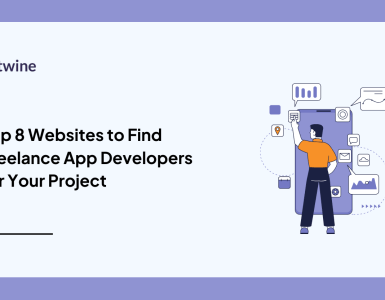Starting a startup could be a real adventure full of potential. Founders are often driven by creativity and passion, hoping to make a significant impact. Despite this, many startups struggle to succeed, with over two-thirds failing to deliver positive returns to investors. So, what allows some to thrive while others falter?
A lack of focus might be one culprit, but there are other hidden challenges that could be avoided with the right knowledge. Understanding the essential success factors and common pitfalls can make all the difference. Discover how to lay the groundwork for a successful startup right from the start.
Technical Reasons for Startup Failures That Could Have Been Avoided
Basically, around 90% of startups don’t succeed, which means only one out of ten startups survives beyond the first year across most industries. With approximately 137,000 new businesses starting daily (or about 5 million annually) and 90% facing failure, nearly 123,000 businesses shut down each day.
Here’s a closer look at how often startups fail:
- 20% close within the first two years;
- 45% don’t make it to their fifth year;
- 65% fail within ten years;
- 75% of American startups go under within 15 years.
Startups can fail due to several factors, like a lack of product-market fit and weak leadership. Although timing and location can influence success, many aspects are within your control to help your startup succeed. Ask yourself some key questions first and find the answers before you start.
Does the Target Market Want My Product?
Many start-ups fail because they offer products that no one wants. Nearly half of startups (42%), fail because they misunderstand market demand. This leads to the creation of products that people don’t want or need. Collecting reliable data about the market you plan to enter should be a priority.
How to Survive During Crises?
If you’re about to launch a startup, you should have a flexible mindset since challenges always arise. Being able to bounce back and adjust as a team helps a business get through tough times.
Interesting fact is that startups with co-founders usually perform better than those with a single founder. About 87% of entrepreneurs believe a co-founder contributed to their success. A co-founder offers partnership, keeps you accountable, and helps avoid common mistakes. They also bring skills and knowledge you might lack.
Do I Know My Customers?
A surprising 68.6% of businesses fail to understand their customers’ perspectives. Your first batch of customers (whether it’s 10, 50, or 100) is most valuable. They provide insights, guide you, and promote your business. It’s crucial to interact with them, pay attention to their feedback, and improve your product or service based on their suggestions.
How to Scale?
A lot of startup leaders wrongly view scaling as a reward, rather than a deliberate process that requires planning and strong management, beyond just increasing income. It’s crucial to understand that current systems are typically designed for existing needs, not future growth.
Rapid growth can strain systems in areas like technology, operations, or customer support. Effective scaling requires you to prepare infrastructure in advance to manage increased demand. This could be investing in AI automation, improving processes, or creating workflows that can manage surges in activity.
Architecture Mistakes That Kill Startup Growth
Suppose your startup seems promising, with some investor support, but it’s not growing as quickly as you’d like. Could the market, technology, or team dynamics be the issue? Let’s explore the key challenges in startup architecture.
Initial Architecture Stage: Overengineering or Lack of Scalability
Startups often can’t decide whether to build a scalable system or just a simple prototype. If they overengineer the system for future needs, it can become overly complex and expensive from the start. This could lead to unnecessary investments in things like microservices or advanced cloud infrastructure, which aren’t needed immediately. Plus, maintaining this kind of system can consume resources and distract from core business goals.
On the other hand, some startups choose a basic prototype that works for now but doesn’t plan for future growth. While this allows for fast changes, it often means the system can’t manage more users as the business grows, which could lead to significant rework later on.
MVP and Early Growth Stage: Poor Tech Debt Management
During the MVP and early growth stages, startups might rush to release new features, which often leads to technical debt. Because of this, engineers spend 33% of their time dealing with this issue. To move quickly, they might use temporary fixes without thinking about long-term effects. If your in-house team is short on time or resources, hiring freelance developers for targeted clean-up work or refactoring can reduce technical debt without slowing your product roadmap. This can make the code more fragile in the future, while adding new features becomes more complicated.
Scaling Stage: Fragile Infrastructure and Bottlenecks
With time, previously hidden flaws in your startup’s architecture may become obvious. For example, a setup that once managed fewer users may struggle with increased demand.
Without automated deployment, release cycles take longer. Manually updating can result in errors and slow progress, delaying important updates and fixes. Plus, using just one database can slow down the app because it becomes a bottleneck.
Integrations and Ecosystem: Poor Security Standards and Lack of Automation for Routine Processes
As startups expand and integrate with other systems, they often face issues like weak security and a lack of automation. Poor security makes them vulnerable to cyberattacks. Besides, many startups depend on simple, manual defenses instead of using automated security measures.
Long-term Evolution Stage: Legacy and Inflexibility
In a startup, early decisions can cause significant issues as the business grows. Old systems make it hard to add new technologies or remove outdated features, while updating them can be expensive.
The team can also struggle with outdated systems, which could slow down progress. This inflexibility makes it hard to adapt to market changes or customer feedback, and may result in losing its competitive edge.
How to Spot and Fix Architectural Flaws Early
Identifying those architectural flaws early on can help your startup avoid growth challenges. By taking proactive steps on the very start, you can build strong, scalable, and flexible systems. Here are some practical recommendations.
- Adopt agile practices. Start with a flexible, modular approach. Use agile methodologies to develop what you need now, and then refine it based on user feedback and performance demands;
- Scalable prototyping. Design a system that can grow with your needs. We suggest using scalable cloud services to add more users without a big initial investment;
- Document and prioritize debt. Maintain a list of technical debt and review it regularly. Balance these items with new feature development to gradually reduce technical debt;
- Refactoring sessions. Allocate time regularly to clean up and improve your code, especially after significant updates. This practice prevents the accumulation of technical debt;
- Move toward microservices. Break down large applications into smaller microservices when needed. This helps manage load and lets you scale each part on its own;
- Deployment automation. Use CI/CD pipelines to speed up and enhance the reliability of deployments. This will let you reduce errors and release updates more often;
- Optimize databases. Regularly check and improve database queries, and think about using sharding or partitioning methods to prevent slowdowns;
- Security by design. Integrate security best practices like running regular security audits and automating security checks with tools like static code analysis;
- Process automation. Use tools and scripts to automate routine tasks for deployment, testing, and daily operations;
- Continuous monitoring. Set up automated monitoring and alerts for integrations to quickly detect and solve issues;
- Component-based refactoring. Slowly update and improve old systems by using component-based strategies, replacing outdated parts with modern ones when needed;
- Strategic roadmapping. Keep architectural roadmaps up to date by collecting input from various stakeholders.
To Sum Up
Wrong decisions that you make now can slow your startup’s growth and waste investors’ money. It’s important for founders to evaluate how their tech choices could impact the company’s future. Knowing possible mistakes in your startup’s setup and potential solutions can help you prevent bottlenecks and improve your system for growth and flexibility.




